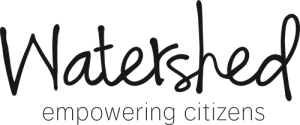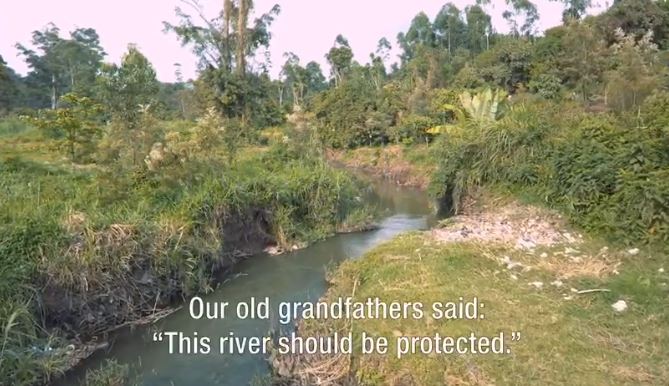Local communities, CSOs, and government work together to pilot new agricultural activities, which don’t harm a vital source of water.
See the longer version of the video.
Fears over the health of River Mpanga have been alleviated as efforts of improved water resource management are showing their first results. Communities, CSOs and government bodies around the catchment area of River Mpanga are finding a much-needed balance between water use and water conservation.
Piles of cracked stones and excavated rocks are the silent proof of the stone quarrying activities that took place along the banks of River Mpanga. At one of the river bends a couple of men are digging their way through an enormous rock. Elkanah Kahuzo, the LC III Chairman of Karangura village, hurries to say that they are just improving a part of the road. The Karangura community has recently abandoned the devastating mining activities that caused siltation and severe river bank erosion.
River Mpanga is a lifeline for an estimated 1.2 million people in Uganda. From its origin in the Rwenzori Mountains, the river flows 250KM through the Kabarole, Kamwenge and Kyenjojo districts before reaching Lake George. Over the past fifteen years, River Mpanga’s flow and quality have been severely affected by human activity. Encroachment, sand and stone extraction, poor agricultural practices; and pollution have taken their toll and reduced its flow. This is why local communities, CSOs, and government bodies are now joining together to halt this devastation. Different organisations have united their efforts through the Watershed programme, creating a Catchment Management Committee and a Catchment Management Plan, that guide the management of River Mpanga. Jackson Kitamirike, Team Leader of the Albert Water Management Zone is pleased the plan has been developed by all parties: “The interventions are clearly wellthought through, because the catchment management planning has been driven by those most affected by the issues. The plan identifies hotspot areas and the interventions required within them.”
One of these hotspot areas is Karangura, upstream in River Mpanga. This rural community largely depends on agricultural activities, stone quarrying and the growing of eucalyptus trees. The first step towards better water resource management was to create awareness amongst the community by bringing representatives together in stakeholder dialogue meetings.
Initially, there was a lot of resistance and confusion in the community when the lucrative stone quarrying was forbidden through a bylaw. Elkanah Kahuzo recalls the dilemma he faced: “They were asking me: Chairman, you have sent us out of the river, what alternative do you have for us?” But in collaboration with several local CSOs and the authorities, the Karangura community has taken their first steps towards a better balance between the use and protection of River Mpanga. Community members pilot new agricultural activities like bee keeping to supplement their income and are learning how to conserve soil and irrigate their crops for improved production.
The Karangura community is willing to strike a balance between water use and water conservation now they are part of the solutions. Community members are rehabilitating the eroded river banks by planting environmental friendly trees which extract less water from the river than their profitable Eucalyptus trees. Programme Manager Pamela Kabasinguzi of HEWASA lights up when she talks about it: “One moment that makes me very proud and excited is seeing the community members themselves, who expected money from the eucalyptus trees, cutting them. They just got their panga’s [machetes] and started cutting, because they wanted to save River Mpanga.” The past year shows that the recovery of River Mpanga benefits from everyone’s involvement, but also that full rehabilitation asks for solutions that favour both the conservation of Mpanga River and the (financial) needs of its surrounding communities.
About Watershed
Watershed aims to build the capacity of civil society organisations in six countries: Kenya, Uganda, Mali, Ghana, Bangladesh, India and also at international level, for evidence-based lobbying and advocacy on Water, Sanitation and Hygiene (WASH) and Integrated Water Resource Management (IWRM) issues. This five-year partnership (2016 – 2020) contributes to the Sustainable Development Goal for universal access to water and sanitation services and water security by making the voices of citizens heard and strengthen governance and accountability.
The partnership activities will specifically focus on the identification and inclusion of the marginalised in WASH and IWRM governance.
Initially the partnership was called WASH IT!, but changed its name to Watershed – empowering citizens.
For more information visit:
www.watershed.nl/

